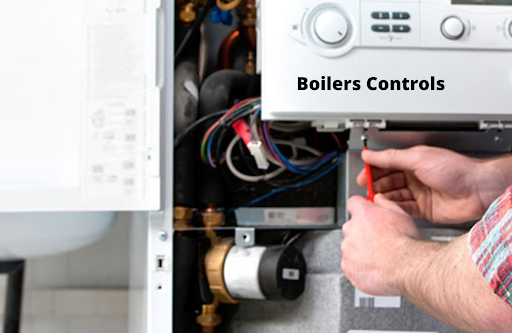In any industrial or commercial establishment, boilers are generally used to generate hot water or steam for space heating. Many boiler controls and characteristics can affect how efficiently a boiler uses its energy, which is used to heat buildings. Knowing how a boiler and boiler control work will help you maintain or improve a boiler’s performance even though it consumes a lot of energy.
What Are Boilers?
A boiler is a closed container that burns fuel to produce steam or hot water or steam. In industrial and commercial facilities, hot electrodes or electric resistant components are also utilized to produce hot water. Boilers are typically employed for process or space heating. The combustion efficiency can be significantly enhanced and managed by delivering the right amount of combustion air mixed with fuel. Understanding boiler control systems are crucial for keeping track of the boiler’s operations. For usage in homes, flats, and commercial and industrial settings, boilers come in a variety of sizes.
Different Types of Boilers
Combustion or water products are heated in large boilers used in industrial settings to provide water with more energy. Steam is created by putting energy into water, which is then used in a variety of processes. Industry experts employ a variety of boiler types depending on the industrial requirements and their unique uses, including:
1. Watertube Boilers:
In water tube boilers, the water is allowed to flow inside the tube while hot gases heat the water by passing over the outside shell.
2. Heat Recovery Steam Generator:
Heat exchange systems include heat recovery steam generators. They use a supplementary fire generator to generate hot water or steam by transferring the energy recovered from the gas turbine exhaust.
3. Firetube Boilers:
The combustion gases can pass through heating tubes that are encircled by process water. Gases deliver heat to tube material, which then transfers it to the water to heat it.
4. Waste Heat Recovery Boiler:
The main function of these boilers is to gather waste heat and apply it to incoming heating gases. These boilers effectively create steam while allowing some energy savings.
How to Increase Efficiency of Your Boiler
Install an Economizer:
The boiler system wouldn’t function without an economizer. It warms incoming feed water by using hot flue gas waste. You can incur substantial maintenance costs if your system has a subpar economizer or none at all. Additionally, it reduces the boiler system’s efficiency.
Insulate Your Valves:
The insulation on the valves of the boiler room is frequently removed in commercial settings. Well, it’s a good practice because a big valve might cause the heat loss and harm the boilers by making the room unbearably hot. Burn risks are reduced and maintenance is made simple by eliminating the insulation from valves.
Clean The Waterside:
It’s important to keep the waterside spotless and leak-free. It is advised to check the waterfront every day because of this. To ensure a clear passage of heat to the water, eliminate any dirt or mud drums. If the problem is not fixed, the water’s high hardness will inhibit the transfer of heat. can also result in overheating, which requires expensive repairs.
Get in touch with the reputed supplier if you’re seeking specialty items suitable for steam application use!





